News
2024
Peatlands & climate & Baltic coast
by Dorothee Scheuch (comments: 0)
Restoration on 850 hectares by 2034
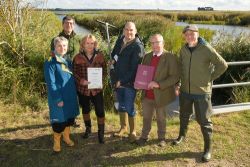
5/10/24 Twelve diked coastal polders between Rostock and the Polish Baltic Sea will be restored over the next ten years as part of the ‘Peatland Climate Protection on the Baltic Sea Coast’ project. One aim of the ANK model project is to significantly reduce the ongoing release of climate-damaging gases on these 850 hectares, up to 24,000 tonnes of CO2 per year. Another aim is to establish climate-friendly land use. Last Friday, Federal Environment Minister Steffi Lemke visited Bresewitz (district of Vorpommern-Rügen) to see the successfully renaturalised peatland areas on the coast. She handed over the grant notification for 27.8 million euros to the project managers Georg Nikelski (Baltic Sea Foundation), Professor Maren Voß (Leibniz Institute for Baltic Sea Research Warnemünde/Marine Cycles) and Professor Gerald Jurasinski (University of Greifswald/Greifswald Mire Centre). The project is funded by the Federal Agency for Nature Conservation, the funds are provided by the Federal Ministry for the Environment (BMUV) in the Natural Climate Protection Action Programme (ANK). The state of Mecklenburg-Western Pomerania is contributing 2.3 million euros to the project.
Image: People from left: Prof Maren Voß, Georg Nikelski, Federal Environment Minister Steffi Lemke, Dr Balázs Baranyai (Baltic Sea Foundation), Minister Dr Till Backhaus, Prof Gerald Jurasinski (Photo: Andreas Krone.)
Paludiculture & Biodiv, Cardboard, Theatre
by Dorothee Scheuch (comments: 0)
New newsletter
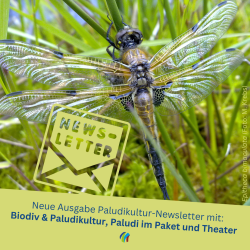
1/10/24 Paludiculture in combination with biodiversity, cardboard and theatre - these are just some of the topics covered in the current issue of our newsletter: A new information paper summarises experiences from Germany on how biodiversity develops on paludiculture areas. Sustainability manager Karla Jabben explains how and why OTTO GmbH has developed a shipping box partly made from paludiculture biomass. There is also an invitation in the newsletter: On the Day of German Unity on 3 October, the Greifswald Mire Centre and the University of Greifswald will be holding a Theatre & Talk in Schwerin to take a look at the history and future of peatland management - entertaining, free of charge and open to all.
We hope you enjoy reading the newsletter and would be happy to receive feedback on it by e-mail to communication@greifswaldmoor.de.
New information paper on paludiculture and biodiversity
by Dorothee Scheuch (comments: 0)
Everything important in brief
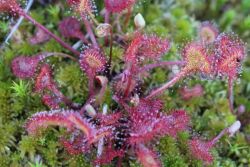
26/09/24 Compared to agriculture on drained peatland, paludiculture promotes biodiversity, as the new information paper of Eberswalde University of Sustainable Development, Peatland Science Centre and Greifswald Mire Centre summarizes. It’s clear: typical peatland and peatland-specific species have no habitat on drained peatland soils. If and which they have on cultivated rewetted areas, is meanwhile shown by studies in several areas. For example, the number of Red List species of birds has doubled within four years on a cattail cultivation area in Mecklenburg-Western Pomerania. On a peat moss cultivation area in Lower Saxony, the number of dragonfly species typical to bogs almost equals that of near-natural bogs in the area after nine years of observation.
After rewetting, wetness-loving and rare species are found where previously widespread species of moist or dry conditions dominated. The intensity of use, mowing and harvesting time have different effects on these species. The mowing of areas creates a more species-rich vegetation due to less litter, more light incidence and leaching. In winter, however, this causes a lack of host plants and winter refuges for some animal species. The information paper addresses both negative and positive aspects, as well as possible conflicts with nature conservation and accompanying measures that can promote biodiversity.
German Unity Day - not without peatlands
by Dorothee Scheuch (comments: 0)
GMC with theatre and expert talk in Schwerin
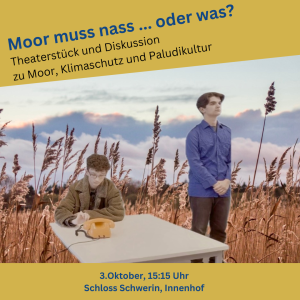
26/09/24 Mecklenburg-Vorpommern is hosting the multi-day celebrations for German Unity Day this year. An opportunity to present the state's moors and research with a look into the past and perspectives for the future - packed into a varied program. Entertaining, open to the public and free of charge on Thursday, October 3 from 15:15-16:45 on the Zukunftsforum stage in the inner courtyard of Schwerin Castle:
15:15 “Moor muss nass, oder was” - A play by the 9th grade of the Martinschule Greifswald: the moor researcher Prof. Dr. Hans Joosten from Greifswald manages to travel into the GDR past to the year 1958 with the help of Mephisto. There, thousands of young people are busy draining the Friedländer Große Wiese, a vast peatland in Mecklenburg-Western Pomerania. Why are they doing this, will the professor succeed in convincing the young people to stop their work and what plans is Mephisto actually pursuing?
15:45 Back in the present, the students meet the bog professor in real life. They ask him questions: Why would Joosten have preferred to stay in the past and why did the enthusiasm of the past turn into the disaster of today?
16:00 What potential does paludiculture offer for agriculture and the economy? What needs to happen politically for more paludiculture and how can research contribute to this? Dr. Franziska Tanneberger (GMC Director and winner of the German Environmental Award), Dr. Till Backhaus (Minister for the Environment and Agriculture MV), Tobias Gruber (Division Manager Sustainability OTTO Group) and farmer Robert Wellen will discuss these issues. The event will be moderated by Jan Meßerschmidt, Head of University Communications at the University of Greifswald.
GMC on PSC Freising
by Dorothee Scheuch (comments: 0)
Overview of our contributions
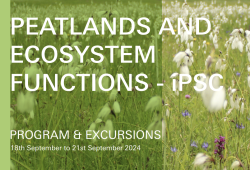
10/09/2024 From 18th-21st September 2024, the Peatland Science Centre at Weihenstephan-Triesdorf University of Applied Sciences invites you to the International Peatland Science Conference (iPSC). Numerous GMC members are participating with presentations and posters. Here is an overview of them:
Thursday, 19th September
14:45 Mehr als ein Papiertiger: Paludikultur-Pilotprojekte in der Papierherstellung – Clemens Kleinspehn
14.45 Microbial community development during and after rewetting a coastal peatland - Sara E. Anthony
15:00 Paludiculture can support biodiversity conservation in rewetted fen peatlands – Hanna R. Martens
15:30 Sphagnum paludiculture sites as surrogate habitats for bog species of many species groups – results of long-term investigation in Northwest Germany – Dr. Greta Gaudig
Friday, 20th September
8:30 Opening with environmental Art “MoorReaktor” - MONAS collective in cooperation with GMC
13:20 Keynote People make Peatlands – practical projects and political processes towards peatland rewetting - Prof. Dr. Gerald Jurasinski:
15:30 Water Management for Spaghnum and Typha Paludiculture – Matthias Krebs
16:00 Bright spots in peatland conservation and restoration Renske Vroom
16:00 Putting Paludicultur into practice – six years of large scale Typha cultivation in Northeast Germany – Josephine Neubert
16:15 Peat formation potential of Typha spp. On a Paludiculture pilot site – Meline Brendel
16:30 PEATMAP: Prototyp model for the study of peatland and swob distribution, ecology and carbon dynamics in the Iberian Peninsula lanscaoe mosaic - Miguel Geraldes
16:30 Paludiculture and biomass quality of cattail on a 10 ha Paludiculture Pilot site in Northeast Germany – Nora Köhn
Dr Franziska Tanneberger, GMC co-director and winner of the German Environmental Award 2024, is a member of the Scientific Committee. The conference will take place at the Weihenstephan-Triesdorf University of Applied Sciences (HSWT) campus in Freising. Please find further information in the detailed programme booklet.











